Unlocking the magic: 10 tips for crafting irresistible children’s book freebies
Looking to build your email list or offer buyers a bonus? Use these pro tips for creating irresistible children's book freebies.
Affiliate Disclosure: This post contains affiliate links, which means if you click on them and make a purchase, I will receive a small commission (at no extra charge to you).

I’m so happy that Chelsea Tornetto, a former teacher turned author, returned to write another guest post for us (read “Beyond the classroom: 8 unique venues for children’s book author visits” here). Chelsea’s first book, Conquering Content Vocabulary, published by Scholastic, is educational. Picture books are her passion now, though. She’s the author of Gardens Are For Growing and God Made You Too. When Chelsea isn’t working on her own stories, she helps others write for children as a freelance editor and author coach for At Home Author. Be sure to check out the company’s free resources.
Unlocking the magic: 10 tips for crafting irresistible children’s book freebies
By Chelsea Tornetto
Creating free downloadable worksheets or resources to accompany a book is a common marketing strategy for authors. These items can be used as lead magnets to attract new readers or given away as bonuses to customers who have already purchased the book.
This is especially common with children’s books. Teachers, day care providers, and parents all appreciate an easy, printable activity that can keep the kiddos busy and engaged for a few more minutes after story time has ended.
But these free downloads are only effective if they’re high quality and provide real value for their intended audience.
As a mom and former educator, I have used my share of free downloads…and I’ve passed up quite a few too.
I look for certain things before I’m willing to share my precious email address.
Here are 10 things to keep in mind that will help you design irresistible children’s book freebies that your readers will love.
1. Think beyond coloring pages.
Coloring sheets are a favorite printable among children’s book authors, but honestly, they’re nothing special.
Same goes for word searches, crossword puzzles, etc.
I’m not saying you can’t include them as an option on your website – it can’t hurt. But if you really want to attract new customers, try to offer something a bit more unique.
For example, check out this adorable printable paper craft Melissa Robinson used as a bonus for her Kickstarter supporters.
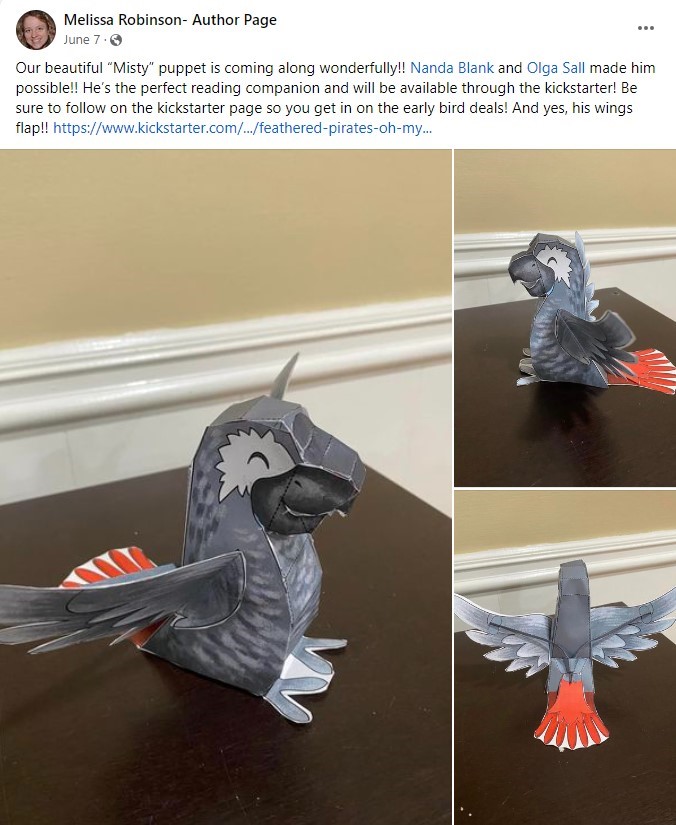
2. Dive deeper to add value.
Think about what topic or theme your book covers and create an activity that helps teachers and parents dive deeper and explore that theme.
What conversations could your book spark? What kind of resources would help adults further that conversation?
For example, is your book about feelings? Create an activity where kids can draw faces to represent their own emotions.
Is your book about a character searching for something? Create a printable scavenger hunt where kids can search for common objects around their home.
The possibilities are endless. Get thinking. Get creative.
3. Get inspired through research.
If you’re struggling to come up with a unique concept for your printable, do some research.
Creep on other authors. Subscribe to a few author newsletters and browse websites to see what others are doing.
Don’t be too proud to model your freebie on something you’ve seen from someone else.
For example, this clever secret code printable could easily be adapted to fit your own book.
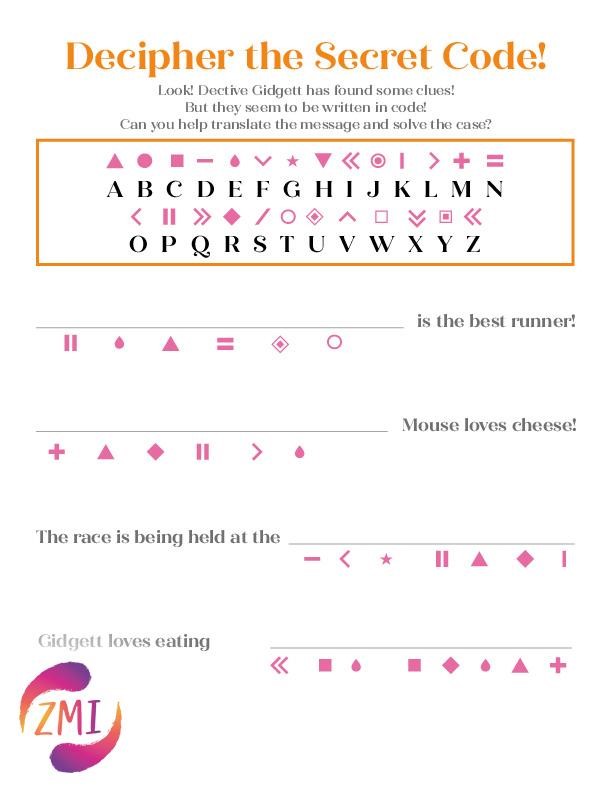
Browse Pinterest, which is a great place to search for printable ideas. If you find something you like, use Canva to create your customized version.
Here are a few ideas for irresistible children’s book freebies that will inspire you.
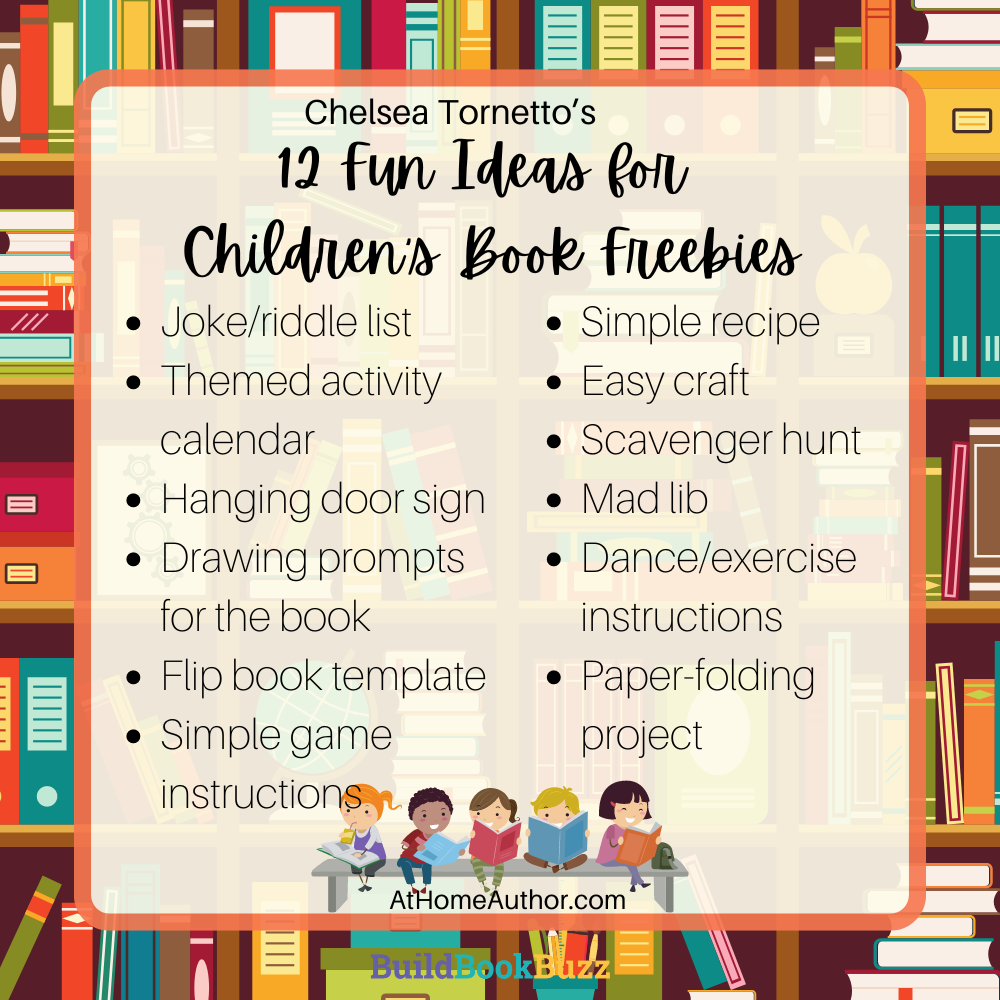
4. Keep it age appropriate.
I highly recommend consulting with a teacher or parent when creating your printable, especially if it’s been a while since your own kids were small.
As adults, we tend to overestimate kids’ ability to complete complex tasks or follow multi-step directions. We can also be quick to forget what age kids learn certain skills.
For example, I once worked with an author who designed a worksheet that required writing sentences…when their target audience was kindergarteners. Can kindergarteners write? Yes, but barely. At that age, writing their own name is usually the goal. Whole sentences are going to be a deal breaker.
If you don’t have a teacher friend to ask, try a teacher or parent group on social media.
5. Keep the mess to a minimum.
I once came across a free download that provided instructions for an art project that involved both food coloring and glitter. I can’t tell you how fast I left that website.
Before you decide on the activity or printable, imagine yourself using it with a group of 5-year-olds in your kitchen. If you get a little nervous about the mess, a potential customer probably will, too.
6. Use common supplies.
It’s okay to create a digital downloads that requires outside supplies. This penguin craft requires crayons, scissors, and glue.
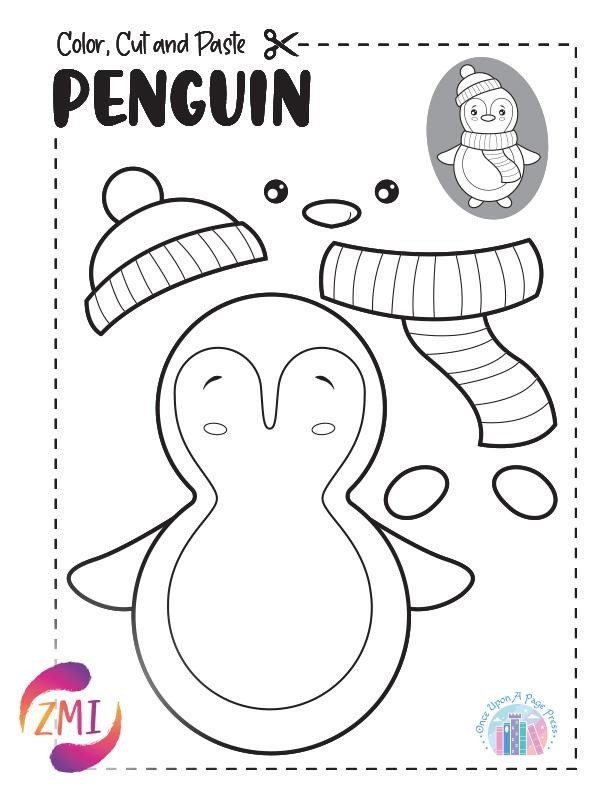
Make sure the required supplies are things the majority of your audience will have around the house, though.
I can tell you from experience that the last thing a busy mom or teacher wants to do is shop for edible rice paper on a Sunday evening. If we don’t have what we need already, there’s a good chance we aren’t going to opt in.
7. Make the directions clear and concise.
No matter what age you’re targeting, it’s important to keep instructions simple and clear.
For example, instead of:
Draw a picture of your own house in the empty space below.
Try:
Draw your house.
Instead of:
Look at all the yummy fruits and vegetables below. Draw a circle around each fruit or vegetable that you like to eat.
Try:
Circle your favorite fruits and vegetables.
8. Black and white is best.
We all know that printer ink is expensive.
Whether your printable is being used by a parent with a home printer, or a classroom teacher with a stone-age copy machine, black and white is going to be the cheapest and most readily available option for printing.
So, unless color is truly necessary, create your printable in black and white or grayscale.
Note: Don’t upload the file in color thinking that people can choose to print in color or black and white. Color files that are printed in black and white are harder to copy and end up being hard to read.
Create and upload the files in black and white.
9. Share as a PDF.
Most people can download and print PDF files.
This is not a situation where you want to get all creative or experimental.
10. Consider hiring a professional.
If you’re semi-techy, you can probably create your printables with Canva, where you can find appropriate templates to get you started. (Search for “children’s printables.”)
But this is also one part of the publishing process that you might want to outsource to a professional.
There are lots of freelancers out there – many of them former teachers – who specialize in making printables for authors. Here are a few I can personally recommend:
- Kristen at The Bright Cookie
- Erin at Tailor-Made Teacher
- Zoe at Zoe Mellors Illustration
You can also look for help on Teachers Pay Teachers.
Browse the site and read the bios. Look for a creator whose work matches the age level and vibe you’re hoping for and reach out to see if they’d be open to creating something customized to accompany your book.
Or, ask fellow authors for recommendations about who they’ve used in the past.
Hiring a professional can save you hours of stress, and might be more affordable than you think.
Create irresistible children’s book freebies by focusing on quality
We all want our books to be high quality. Our freebies should be, too.
If you’re using your free printable as a way to attract new readers, you want their first impression to be a great one.
Parents and teachers quickly recognize which websites provide them with valuable resources, so follow the tips I’ve shared here to make sure yours is on that list.
Get Chelsea Tornetto’s 10 next-level tips for creating irresistible children’s book bonus materials and lead magnets.Click to tweetAre you using printables as lead magnets or purchase bonuses? Please tell us about them in a comment!
Like what you’re reading? Get it delivered to your inbox every week by subscribing to the free Build Book Buzz newsletter. You’ll also get my free “Top 5 Free Book Promotion Resources” cheat sheet immediately!

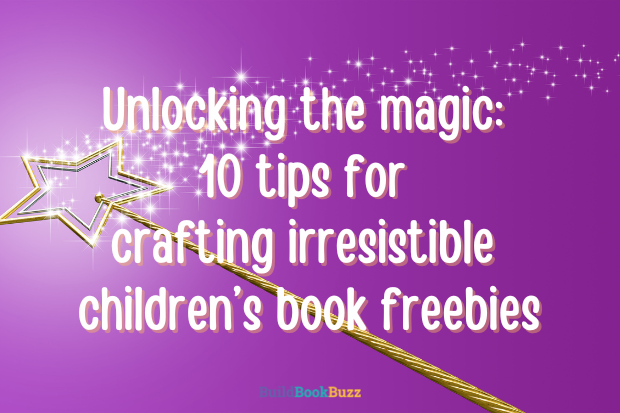
Great tips! I’ve shared this with two of my friends who write children’s books. The one that surprised me most was #8. I never realized that color vs. black and white might be an issue.
Thanks for the comment and the share, Mary! I related to #8 because I don’t have a color printer, so I know how this works. : )
Sandy